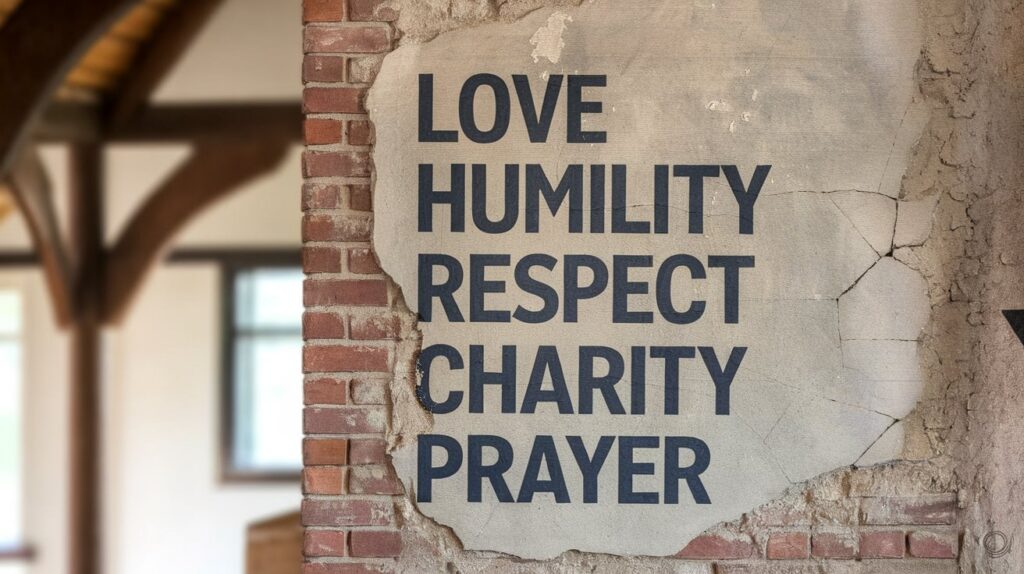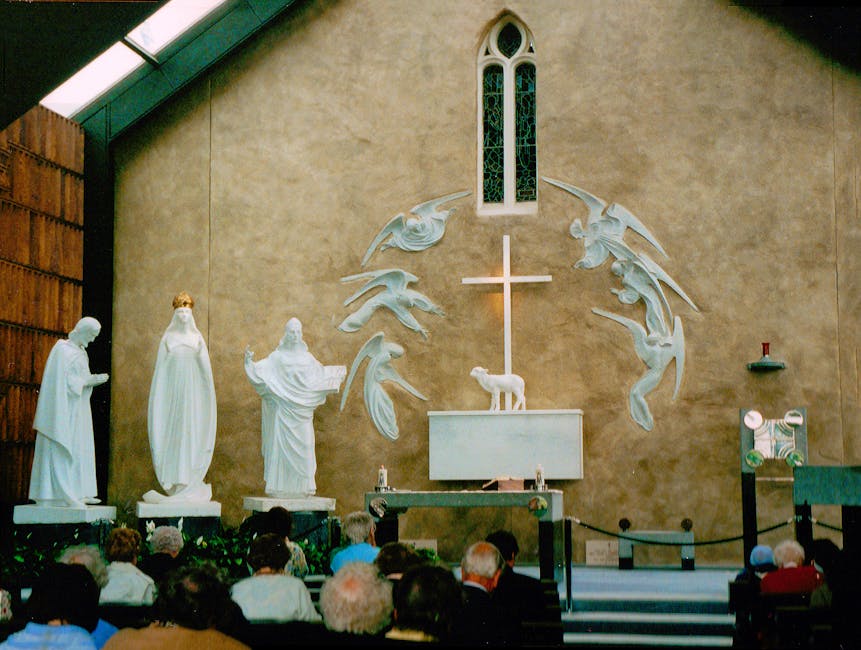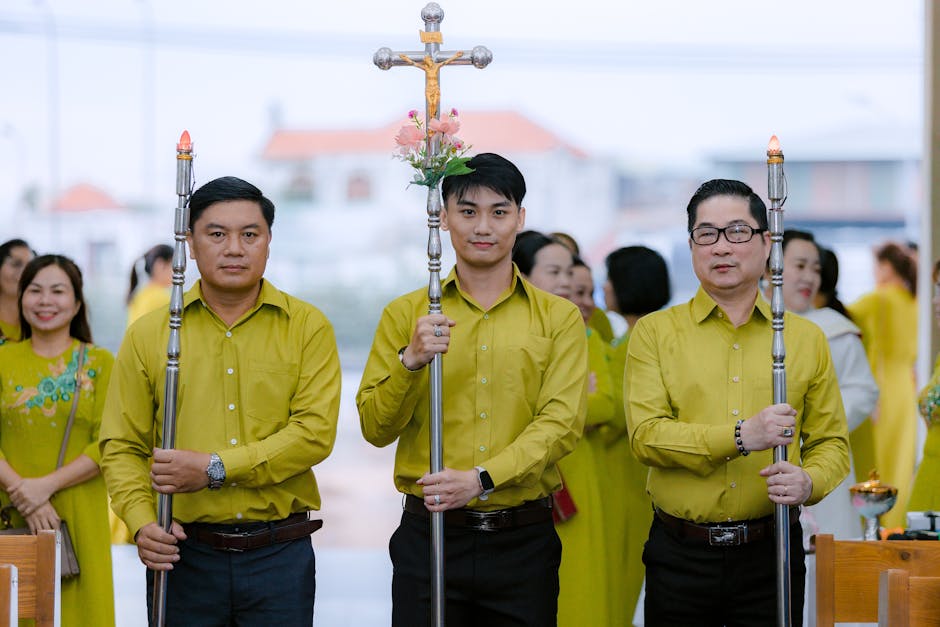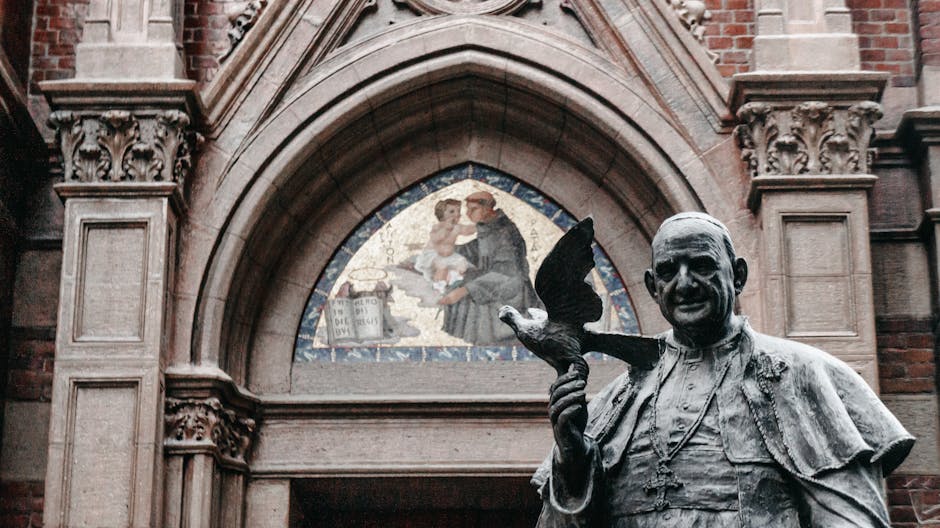Faith—that curious, profound bridge between the seen and unseen—has sustained Catholic believers through two millennia of human history. To live as a Catholic isn’t merely to check boxes on a spiritual to-do list but to inhabit a rich tapestry of tradition, community, and personal connection with the divine that transforms ordinary moments into sacred encounters.
The Ancient Dance of Ritual and Belief
Picture this: early Christians gathering in dimly lit catacombs, breaking bread together while Roman soldiers patrolled the streets above. Their faith wasn’t a philosophical exercise but a dangerous, radical commitment. Fast forward through centuries, and Catholic faith has evolved into a global phenomenon that both preserves ancient wisdom and adapts to new cultural landscapes.
The 4th-century debates that determined the Nicene Creed—words still whispered in cathedrals and parish churches today—remind us that Catholic faith has always been both intellectual and visceral. The monks who painstakingly illuminated manuscripts during Europe’s darkest hours weren’t merely preserving knowledge; they were enacting faith through patient labor, believing that beauty itself could be prayer.
Catholic faith today carries these historical echoes. When a modern believer dips fingers in holy water upon entering a church—a gesture taking seconds—they join an unbroken chain of ritual stretching back to the earliest baptismal practices. There’s something profoundly humbling about participating in traditions that have outlived empires.
The Sacramental Imagination
At its heart, Catholic faith offers a distinctive lens for viewing reality—what theologians call the “sacramental imagination.” This isn’t about seeing visions of saints in toast (though such enthusiasms have their place in folk Catholicism). Rather, it’s the perspective that material reality can be charged with divine presence.
The seven sacraments formalize this worldview. Bread becomes Body, water cleanses sin, oil marks one for mission, words of forgiveness heal spiritual wounds. But beyond these official channels of grace, Catholic faith invites believers to discover the sacred hiding in plain sight: in the steam rising from a soup kitchen pot, in the worn rosary beads passed through generations, in the unexpected kindness of a stranger.
Maria Gonzalez, a third-generation Catholic from San Antonio, describes it this way: “My abuela taught me that when you cook with love, you’re participating in the Eucharist in your own small way. God becomes present in the care you take with ordinary things.”
Faith in Motion: The Daily Catholic Life
Living Catholic faith resembles less a static state than a dynamic journey. The liturgical calendar—a spiritual map guiding believers through seasons of preparation and celebration—transforms how Catholics experience time itself. Ordinary Tuesday mornings in Lent carry different spiritual weight than Sunday afternoons during Easter season.
This rhythm shapes daily practice. Morning prayers, grace before meals, evening examinations of conscience—these punctuate the day with moments of mindfulness. The Catholic at work might briefly touch the crucifix in their pocket before a difficult meeting, or mentally offer up a challenging task as prayer. Small gestures, yet they stitch together a life oriented toward something beyond the immediate.
Community anchors this personal practice. Parish life—with its potlucks, committee meetings, and shared celebrations—provides the social ecosystem where faith thrives. “Church isn’t the building,” as the saying goes, “it’s the people.” The Catholic understanding of the Church as the Mystical Body of Christ gives theological weight to this folk wisdom.
Wrestling with Tradition in Modern Times
Let’s not romanticize—living Catholic faith in the 21st century brings unique challenges. The Church carries both treasures and wounds from its long history. Modern Catholics navigate tensions between ancient teachings and contemporary questions about gender, sexuality, scientific discoveries, and social justice.
Many find themselves practicing a faith of “both/and” rather than “either/or,” honoring tradition while engaging critically with aspects that seem outdated. Young Catholics especially often describe themselves as “faithful questioners,” committed to core beliefs while pushing for greater inclusivity and relevance.
The clergy abuse scandals have forced painful reckonings. Trust has been broken; healing remains incomplete. Yet many Catholics distinguish between the institutional church’s failures and the enduring value of the faith itself. They work for reform while drawing strength from the spiritual resources Catholicism provides.
Personal Faith in a Universal Church
Perhaps the most beautiful paradox of Catholic faith is how it balances universality with intimacy. The same Mass unfolds in Nigerian villages and Manhattan cathedrals, creating a global communion. Yet each believer develops unique spiritual rhythms and personal relationships with particular saints, prayers, and practices.
Thomas Merton, the Trappist monk whose writings bridged Catholic spirituality with modern sensibilities, described his conversion moment as a realization that “I was not just a speck of dust in the universe, but someone Christ died for.” This tension between cosmic significance and personal belovedness defines the Catholic experience of faith.
Living in faith as a Catholic means inhabiting this tension—being part of something ancient and global while nurturing a deeply personal spiritual life. It means finding God in both magnificent cathedrals and quiet living rooms, in formal liturgies and improvised prayers.
The Path Forward: Faith as Journey
Catholic faith has never been static. From the early Church councils through medieval mysticism, counter-reformation vigor to Vatican II renewal, the tradition constantly reinterprets itself while maintaining core continuity. Today’s Catholics continue this dynamic relationship with their heritage.
Sister Helen Prejean, whose anti-death penalty activism emerged from her Catholic faith, puts it simply: “I used to think that to be holy meant to be separate from ordinary people. Now I understand that being holy means being absolutely connected with people.”
This evolving understanding characterizes authentic Catholic faith. It’s not about perfect adherence to every rule, but about a living relationship with God and community that transforms how we move through the world.
To live as a Catholic today means to drink from ancient wells while walking modern paths. It means finding in tradition not a museum to visit but a home to inhabit and renovate. Above all, it means trusting that faith isn’t about having all the answers, but about facing life’s questions with hope, community, and the conviction that love—divine and human—has the final word.




